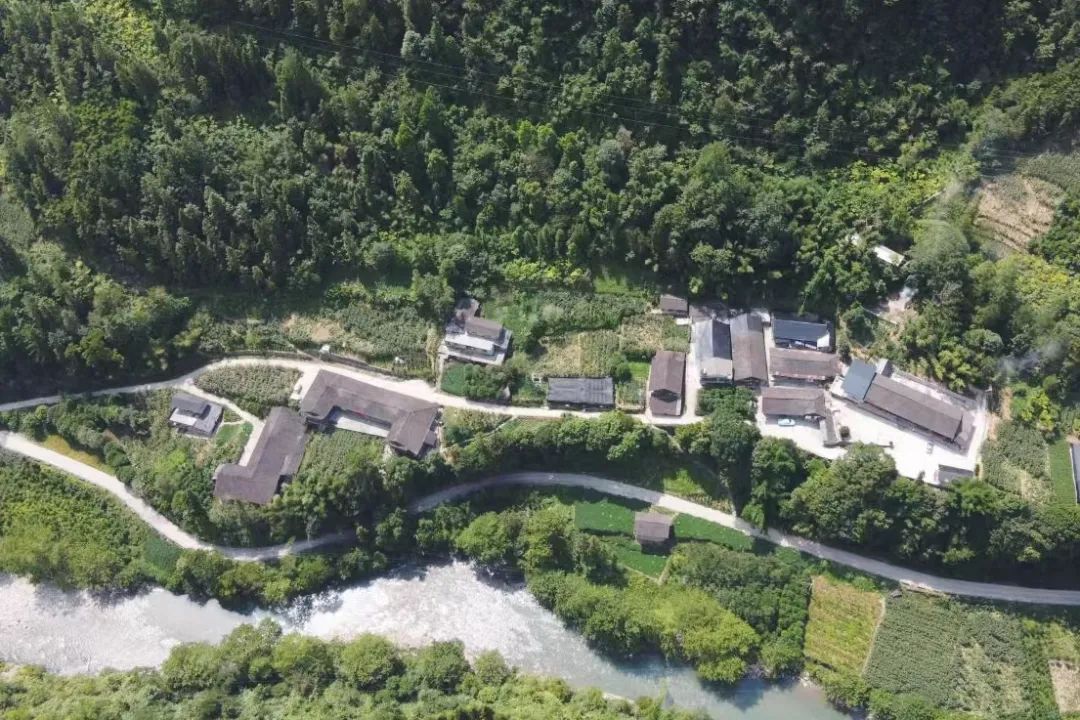无形的纽带: 生态系统文化服务与景观实践
注:原中英文全文刊发于《景观设计学》(Landscape Architecture Frontiers)2022年第5期“生态系统文化服务与景观实践”。获取全文免费下载链接请点击https://journal.hep.com.cn/laf/EN/10.15302/J-LAF-1-010027;参考引用格式见文末。
导 读
人类与自然世界之间存在复杂的互动关系,而生态系统文化服务对于诠释这种纽带关系意义重大。生态系统文化服务指自然界赋予人类社会的非物质裨益与福祉,包括自然游憩、审美体验、场所感知、文化遗产、灵感启迪等。然而,社会的快速演变不仅深刻改变了人类行为,也影响了人地关系,重构了生态系统文化服务和人类的供需关系。景观实践者应当采用创新方法来审视和理解自然生态系统与人类文化依恋之间的复杂关系,并通过景观设计实践使这种关系更加可持续。生态系统文化服务具有桥接景观实践与社会变化的潜力,可为理解人类与自然之间的联系及推动可持续发展提供多学科视角。
关键词
生态系统文化服务;景观设计学;人地互动;社会变化;社会-生态系统
无形的纽带:生态系统文化服务与景观实践
Intangible Bonds:Cultural Ecosystem Services and Landscape Practices
作 者
文晨1,2,徐海韵3,托比亚斯·普利宁格4,5
1 华中科技大学建筑与城市规划学院
2 自然资源部城市仿真重点实验室
3 北京建筑大学建筑与城市规划学院
4 德国哥廷根大学农业经济与农村发展学系
5 德国卡塞尔大学有机农业科学学院
自古以来,人类与自然密不可分。我们改造、塑造自然,以满足自身的需求和欲望;自然是我们的灵感与平和之源,并如此深刻地影响了人类社会,以至于我们对其产生了强烈的情感依恋,将之嵌入文化与观念中,践行于我们的人居环境建设。然而,当今社会的快速演变正在撼动这种人与自然联系的基石,技术的进步、社会价值观的转变,以及不断增长的人口需求都在冲击着我们与自然间的联系。这些改变的速度之快,已令长期以来维系人类生存的生态系统无法承载。展望未来,我们需要发展新的途径来理解和珍视自然生态系统与人类文化依恋之间的复杂关系,并思考如何通过景观规划设计实践使这二者间的纽带关系更加可持续。

云南省大理市剑川县沙溪镇石龙村的火把节 © 赵靓
景观设计学既关注自然的生态价值,也关注其文化和社会价值。生态系统文化服务(Cultural Ecosystem Services)是生态系统为人类社会带来的非物质裨益与福祉,包括自然游憩、审美体验、场所感知、文化遗产、灵感启迪等[1]。作为生态系统服务的重要组成部分,生态系统文化服务在休闲游憩、精神疗愈,以及维护文化多样性和特有性等方面都发挥着不可或缺的作用。《千年生态系统评估》(Millennium Ecosystem Assessment)指出,生态系统文化服务评估能揭示生态系统动态变化对人类福祉的影响,理解自然与人类社会的联系与相互作用,并促进可持续发展。如今,生态系统服务理论逐渐成为景观规划的支撑理论之一,生态系统文化服务也备受国内外景观实践者的关注,主要议题包括如何通过有效的规划设计实践来理解复杂的人地关系、评估规划方案、协调不同的利益相关方,以及有效回应社会问题等[2]。
近年来,中国与世界多地都在经历高速城镇化,人口结构、生活方式及审美偏好等方面也发生着快速变化。这些变化深刻改变了人类行为,也影响了人地关系:居住形式、出行习惯、人口分布、家庭结构的改变影响了我们与景观之间的联系,重构了生态系统文化服务和人类的供需关系,也促使我们关注老年人、儿童、城市新移民、农村留守人员等不同的社会群体。与此同时,人们在景观感知、审美偏好、自然游憩风尚、生活方式等方面的变化——例如共享单车的广泛使用、社交媒体和短视频的流行、网红地打卡现象——也影响了我们对景观和生态系统文化服务的理解[3][4]。

湖北省恩施州宣恩县药铺村 © 湖北省村镇建设发展研究中心
生态系统文化服务的内涵决定了其具有桥接景观实践与社会变化的潜力,可为景观设计学科提供一个审视人地关系的多学科视角。相关理论、方法和工具也能帮助从业者更好地开展景观解读、评估、规划设计与管理工作[2][5]。在本期中,我们将从理论、方法等维度探讨生态系统文化服务与景观实践的关系。相关研究议题包括建设“全域旅游”背景下区域尺度的游憩潜力预测、运用网络评论数据对城市公园进行生态系统文化服务的感知测定和评估,以及景观设计师在儿童早期自然教育中扮演的角色等。本期还呈现了生态系统文化服务这一理论的发展历程,以及为什么新技术和新概念的引入能够帮助它进一步演化。此外,来自夏威夷的案例表明,在经年累月的环境和社会危机下,景观设计专业应通过重塑生态和文化的关系,建设一个自主决定、公平和具有韧性的未来。

德国下萨克森州卡塞尔市威廉高地的森林游憩 © 徐海韵
以下为文章英文版本,引用格式见文末
For generations, humans have been intrinsically tied to the natural world, modifying and molding it to suit our needs and desires. Nature has been a source of inspiration and peace to us, influencing our cultures and beliefs, and creating a strong emotional attachment to the natural world. However, our society’s fast evolution is testing the very foundations of this connection. Technological advancements, social values shifts, and the increasing demands of a growing population have all combined to push the boundaries of our contact with nature. The pace at which these changes are taking place is even exceeding the ecosystems that have sustained us for so long. As we look ahead, it is becoming evident that we will need to develop new approaches to understanding and appreciating the complex cultural relationships that exist between the natural ecosystem and our cultural attachment, as well as to build a more sustainable interaction via landscape practices.
Landscape Architecture concerns not only the ecological values of nature but also its social and cultural values. Cultural Ecosystem Services (CES) are the intangible and non-material benefits delivered from nature to human societies, including nature-based tourism, landscape aesthetics, sense of place, cultural heritage, and spiritual inspiration[1]. As one pillar of Ecosystem Services (ES), CES play significant roles in leisure activities, cognitive recovery, and the conservation of cultural diversity and uniqueness. The Millennium Ecosystem Assessment suggests that evaluation of CES can reveal how the dynamics of the ecosystem impact human well-being, facilitate understanding their interactions, and promote sustainable development. Nowadays, ES are among the central topics in global landscape research and has become mainstream theories in supporting landscape planning. Chinese and the global landscape practitioners also pay great attention to CES, especially regarding how to understand complex human-nature relationships, how to evaluate CES for planning, how to help communicate with different stakeholders, and how to respond to social issues with effective planning and design[2].
Recently, China, together with the world, is undergoing rapid changes, including urbanization, demographic changes, changing lifestyles, and dynamic aesthetic preference. Those changes influence both human behaviors and the human-nature relationships. On one hand, societies nowadays have different resident forms, travel behaviors, population distributions, and family structure. All are influencing how we interact with landscapes. The social dynamics reshape the supply−demand relationships between CES and people, and enhance our concerns on different social groups, including the elderly, children, new citizens, and left-behind people in rural areas. On the other hand, human behaviors are expressed in terms of landscape perception, aesthetic preferences, fashions of nature-based recreation, and lifestyles[3][4]. For example, the widely-use of shared bikes, social media, short videos, and web celebrities’ sites also impact how we understand landscapes and CES.
The nature of CES demonstrates that they can be the potential bridge between landscape architecture and social changes. Since CES are multi-disciplinary, they can better help Landscape Architecture understand the meanings of human-nature relationships. Their theories, methods, and tools can help support understanding, assessing, planning, designing, and managing landscape[2][5]. This special issue covers broad topics related to CES and the landscape practice, ranging from theories, methods, and others. There are research articles on topics such as predicting recreational potential at the regional scale within the context of “all-for-one tourism,” the use of online comment data to assess perceptions and evaluations of urban parks’ ecosystem cultural services, and the role of landscape architects in early childhood nature-based education. We also present the evolution of the theory of ecosystem cultural services and the reasons why the introduction of new technology and concepts can aid in its evolution. Another case from Hawaii highlights how landscape architecture should reconstruct the interaction between ecology and culture to establish a self-determined, fair, and resilient future in the face of environmental and social catastrophes.
部分参考文献
[1] Fish, R., Church, A., & Winter, M. (2016). Conceptualising cultural ecosystem services: A novel framework for research and critical engagement. Ecosystem Services, (21), 208-217.
[2] Plieninger, T., Bieling, C., Fagerholm, N., Byg, A., Hartel, T., Hurley, P., López-Santiago, C. A., Nagabhatla, N., Oteros-Rozas, E., Raymond, C. M., van der Horst, D., & Huntsinger, L. (2015). The role of cultural ecosystem services in landscape management and planning. Current Opinion in Environmental Sustainability, (14), 28-33.
[3] Bauer, N., Wallner, A., & Hunziker, M. (2009). The change of European landscapes: Human-nature relationships, public attitudes towards rewilding, and the implications for landscape management in Switzerland. Journal of Environmental Management, 90(9), 2910-2920.
[4] Balázsi, Á., Riechers, M., Hartel, T., Leventon, J., & Fischer, J. (2019). The impacts of social-ecological system change on human-nature connectedness: A case study from Transylvania, Romania. Land Use Policy, (89), 104232.
[5] von Haaren, C., Lovett, A. A., & Albert, C. (2019). Landscape Planning and Ecosystem Services: The Sum Is More Than the Parts (pp. 3-9). In C. von Haaren, A. A. Lovett, & C. Albert (Eds.), Landscape Planning With Ecosystem Services: Theories and Methods for Application in Europe. Springer.
本文引用格式 / PLEASE CITE THIS ARTICLE AS
Wen, C., Xu, H., Plieninger, T. (2022). Intangible bonds: Cultural ecosystem services and landscape practices. Landscape Architecture Frontiers, 10(5), 4‒7. https://doi.org/10.15302/J-LAF-1-010027
编辑 | 田乐,高雨婷,王颖
制作 | 高雨婷
版权声明:本文版权归原作者所有,请勿以景观中国编辑版本转载。如有侵犯您的权益请及时联系,我们将第一时间删除。
投稿邮箱:info@landscape.cn
项目咨询:18510568018(微信同号)











